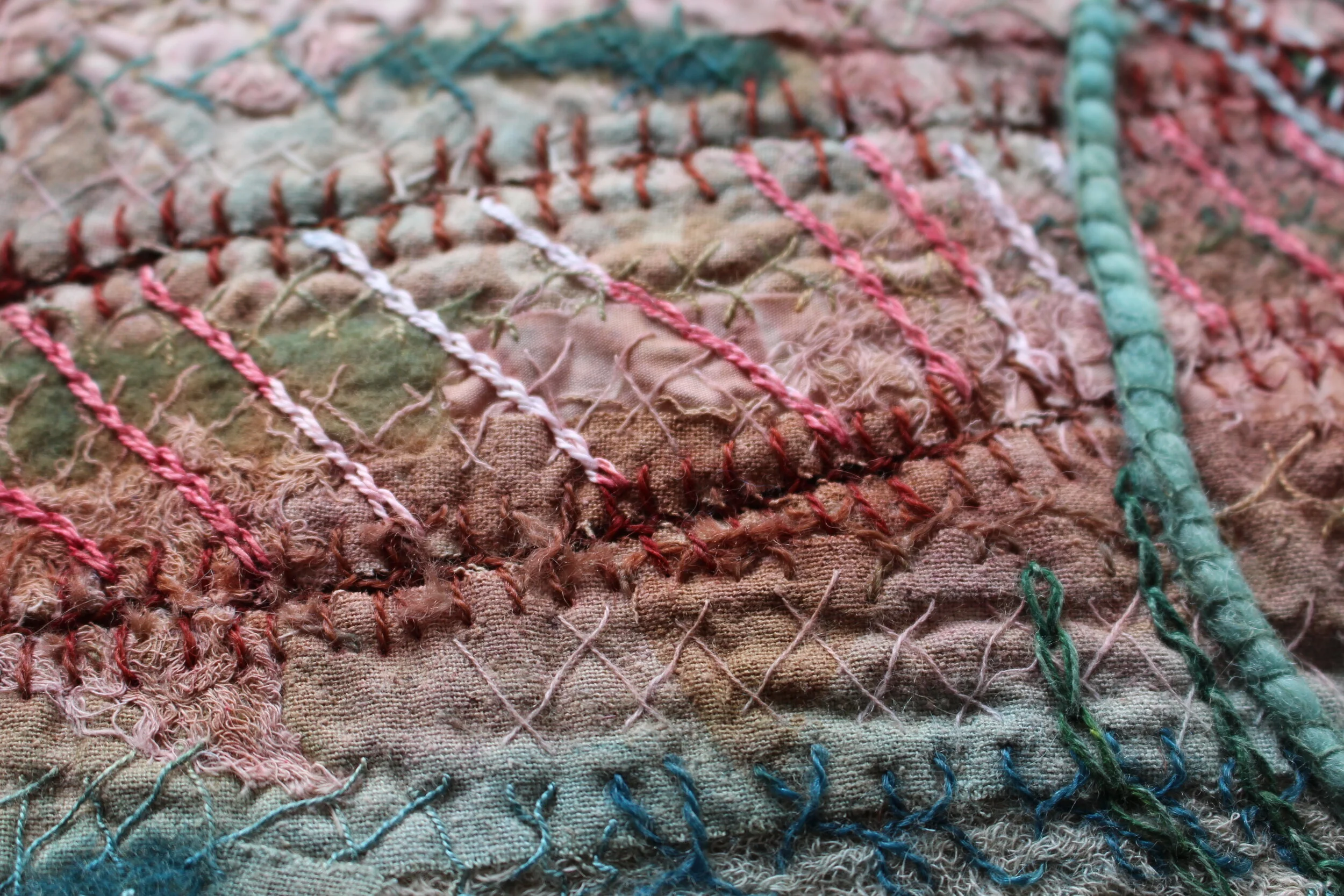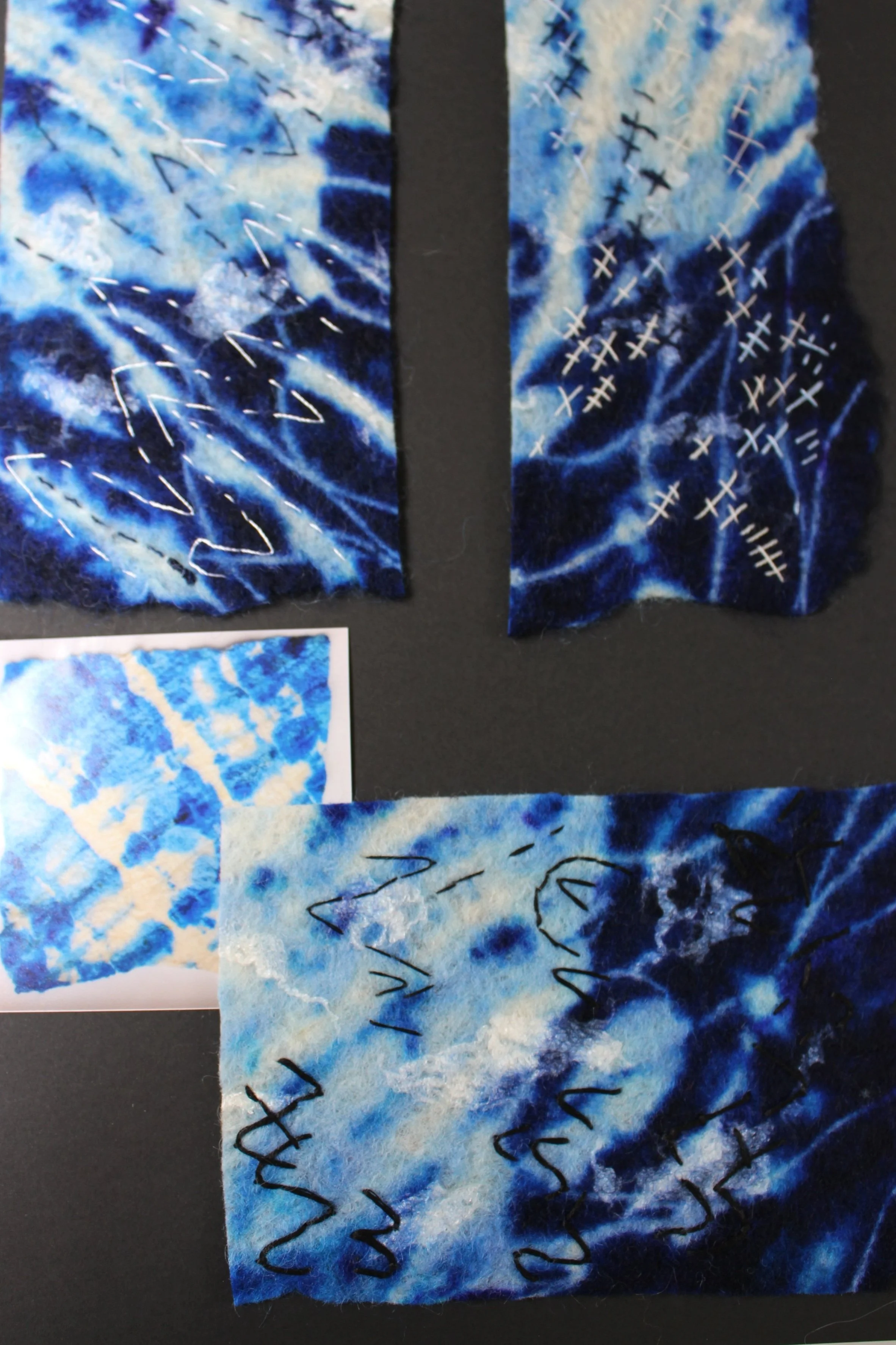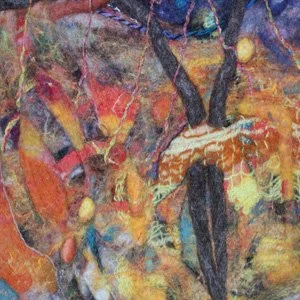How the Snowbirds creative community at Artybird Carnforth stays connected across vast distances, sharing ideas, friendship and creative momentum through DesignPlus.
Line - Finding the Path Through the Work
Learning in Layers
Shape – Seeing the Structure of the Work
Learning in Motion – How Creativity Travels With Us
When Colour Is Limited, Imagination Expands
Finding the Flock – How Artybird’s Snowbirds Connected Across Distance
I am an Artist
Eco Art from the heart
Don't race to the end - enjoy every element!
Why are Textiles not Art?
From Stitch to Embroidery
Creative Computing: Finding the Narrative in a Photo
Looking at the work of others
Mark-Making in Felt
A single mark, whether produced by pencil, pen, brush or needle can be meaningful and effective, but the combination of marks, layered in complexity was a challenge.
I realised that I needed to consider not only the marks I want to produce, but how the choice of fibres, the order of working, the effects of scale and shrinkage, the migration of colour through the layers all play their part and affect the finished result.
Maths and Art – DON’T PANIC! It can be pretty!
I am not a mathematical person and it helps if your tutor loves maths!
I am fascinated by the way in which maths explains nature but doesn’t define it. I did research certain mathematical concepts which are rhymical and repetitious in nature – the Fibonacci Principle and the Golden Ratio and I looked at geometry in nature. I like the concept of drawing a spiral that replicates those found in nature from drawing squares according to the Fibonacci Principle. In the context of my work the spiral represents the proboscis of the moth.
“From the simplest observation in nature to detailed measuring of intricate forms we find geometry everywhere in the world around us.” Geometry in Nature by John Blackwood. John shows how many forms in nature are generated by the same basic geometic process. I enjoy looking at how nature is explained by geometry even though numbers are not my thing. I see the visual connections of shape, repetitions and forms which I enjoy and can take forward in my designs.
Bridget Riley’s work suggests movement by colour juxtaposition within the variation of the lines and shapes she has meticulously calculated. Her geometric paintings implore the viewer to reflect on how it physically feels to look, her objective being to interrogate what and how we see and to provoke uncertainty and clarity with her paintings, allowing the viewer to complete the experience of the painting. By looking at the work of Bridget Riley I have a deeper understanding of my own voice and how I can say it within my work.
There are a couple of quotes by Bridget Riley that resonate with me:
"For me nature is not landscape, but the dynamism of visual forces."
“If you allow colour to breathe, to occupy its own space, to play its own game in its unstable way, it’s wanton behaviour, so to speak. It is promiscuous like nothing.”
By Maggy Lightfoot
Seeing the unseen – the beauty of moths!
Felting with a machine. Who I am!
I inherited a small amount of money from my grandparents and bought a Groovi 1000 felting machine. This has pressure rollers and was the main felting machine around at the time. I attended a workshop at Artybird Carnforth with Rod Welch and Karolina Arvilommi and as Rod had developed a similar felting machine some years earlier their influence was helpful.
I experimented with wrapping methods and using different pressures during felting and resulted in enabling me to make the felt I want. It will cope with some low relief and I often layer the felts at different stages, building it up as I go. One of the experiments was to use the pressure to compact dry fibres so I didn’t have to carry heavy wet felt to and from the machine. This was very successful and created a thick ‘half-felt’ that I was able to cut into shapes or use as a layer.
Many other tools are available to help with different stages of felting and one of my favourites is the original felt rolling pin, which I use at all stages of making. Kate and I researched many other felting tools and published our findings in Felt Matters, the IFA magazine.
The embellishing machine is a godsend for adding lines and details as well as texture. I also blend most of my fibres to create the colours I want and for this I use a drum carder and a blending board.
One of H. Jackson Brown’s inspirational quotes is: “However difficult life may seem, there is always something you can do and succeed at.”
By embracing the need for help with tools I can be who I am.
By Maggy Lightfoot


















